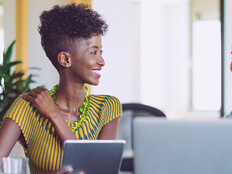Understanding the Value of AI Chatbots in Retail
When customers shop, they value finding what they want quickly and easily. These wants are specific, detailed and personal. This helps explain why customers consider the quality of customer service to be the second most important factor in deciding where to shop — 73 percent of retail customers expect brands to know their preferences. And that’s where AI chatbots come in.
DISCOVER: How can chatbots help retailers?
AI chatbots and generative AI more broadly are directly applicable to “conversational commerce,” personalizing the experience for customers. From serving as a virtual stylist to providing personalized product recommendations, a chatbot can find what consumers want efficiently 24/7 hours a day.
While AI chatbots may have mastered traditional customer service Q&As, their ability to perform more conversational exchanges can still leave a lot to be desired. Too often, the communication has the stiffness of, well, a robot, which may alienate some customers.
Why Retailers Need Kinder AI Bots
The more humans and bots interact, the better their interactions become. But some consumers may still be wary about using them.
In these cases, consumers may choose to deal with a human instead. This preference for more human interaction is also evident among consumers who anticipate using chatbots: 34 percent expect to use them to find human customer service assistants.
There’s a simple reason for this: Humans maintain a level of contextual awareness and emotional intelligence that chatbots do not. Humans also can adjust their tone of voice or style based on the type of consumers they encounter.
To increase a chatbots’ emotional competency, retailers should give them significant training so that they are exposed to a range of speaking styles and human emotions. Over time, this set of emotional inputs will help them become more friendly.
According to a study published in the Journal of Retailing and Consumer Services, the more effective route to recovering consumer satisfaction with chatbots is to introduce politeness strategies and face concern to the field of chatbot service recovery.
RELATED: Meet your new friend, the AI chatbot.
How to Train Your Chatbot
Training a chatbot to be more friendly and training a chatbot to appear more human are two different things, and the latter is not the goal. Not only do most consumers want chatbots to make it clear that they’re bots but purposeful deception can give rise to all sorts of ethical concerns. Training an AI chatbot to be more kind, however, is good business, as it can increase consumer satisfaction and lead to a wider acceptance of this technology.
Refining your chatbot’s ability to converse in a casual and warm tone is a process, but it is feasible. First, retailers must determine chatbot use cases and define user intent. Next, they must analyze conversation history and generate variations of user queries so that bots can pull from a range of interactions, prepare answers and develop “personalities.”
It’s also important to remember that sending your chatbot to charm school doesn’t have to be a solo undertaking: Tech partners such as CDW and IBM are helping businesses identify and implement training to help AI chatbots become more polite so they can better meet customer needs.











